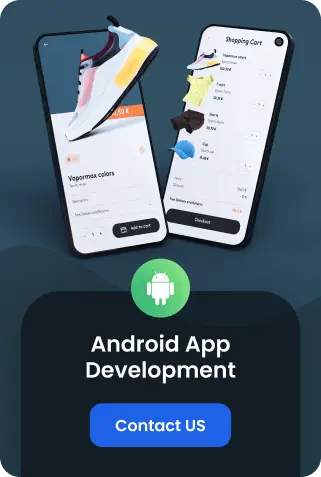In this digital age mobile apps are now an element in our daily lives. From ordering food or shopping, to socializing and banking apps are available to do almost everything. For business owners creating a mobile application for your business could be a wise decision to remain ahead of the competition and engage your customers better. In this article we will go over the process to Make An App For Your Business for the company and discuss the ways it can become an effective tool to achieve your objectives.
Why Make an App for Your Business?
Before getting into the process of establishing an application for your business it’s important to know the rationale behind this choice.
1. Improved Customer Engagement:
Mobile apps provide an immediate and interactive platform for companies to communicate with the customers they serve. With push notifications, personalized content, and messaging in-app you can keep your audience updated and entertained.
2. Greater visibility:
Being present in app stores such as Apple App Store and Google Play Store could boost your company’s visibility. People who are searching for similar products or services that yours tend to come across your application.
3. Enhances Customer loyalty:
Apps can encourage loyalty by offering exclusive discounts, rewards or loyalty programs for customers. The ease of use of apps will also make customers more likely to select your company over other businesses.
4. Streamlined Operation:
Business applications can automate processes, thus reducing the manual tasks of your staff. This can result in cost savings, and also allow employees to concentrate on more important tasks.
5. Data insights:
Apps can gather important data about user behavior and preferences. By analyzing this data, you make better decisions, fine-tune your marketing strategies and adapt your services to the requirements of customers.
6. competitive advantage:
The reality is that not all companies have mobile apps that they own. In the event that you develop one, you’ll increase your competitive advantage in particular if the application has unique features or an exceptional user experience.

Steps to Make An App For Your Business
Step 1: Define Your App’s Purpose and Goals
Before you can begin creating an application, you must have an understanding of its function and the goals you wish to accomplish. Think about the following questions:
- What issues can your app address for your intended audience?
- What goals do you hope to achieve with the application (e.g. increasing sales, increasing customer service and expanding the reach of your brand)?
- Who is your intended audience as well as what are their needs, preferences and requirements?
- What features and functions will your app need to accomplish these goals and effectively serve your users?
- The definition of your app’s purpose and objectives is essential since it will help guide the steps that follow in the process of development.
Step 2: Choose the Right Development Approach
There are two major options for app development which are cross-platform and native. Each of them has advantages as well as disadvantages. The option you choose is dependent on your individual needs.
1. Native App Development:
-
- Pros :
- Provides the highest efficiency and experience for users.
- Access to features specific to your device (e.g. cameras, GPS).
- More seamless integration of platforms (iOS as well as Android).
- Cons :
- Higher development costs.
- It requires separate codebases that are compatible with iOS in addition to Android.
- Longer development time.
- Pros :
2. Cross-Platform App Development:
-
- Pros :
- Speedier development by using one codebase.
- Lower development costs.
- Easier maintenance.
- Cons :
- A little less performance when compared to native apps.
- Only limited access to certain particular features of the device.
- Pros :
Your decision between cross-platform and native development should be in line with your app’s objectives and your budget.
Step 3: Design the User Interface (UI) and User Experience (UX)
The look and feel of your app plays a vital part in attracting and keeping users. A user-friendly and visually appealing UX/UI is crucial. Think about the following design considerations:
1. User Interface (UI):
-
- Create a simple and user-friendly interface that is easy to navigate.
- Select an unison color scheme and typeface that is consistent with your brand’s image.
- Utilize high-quality images and graphics to improve your visual impact.
2. User Experience (UX):
-
- The most important thing is user-friendliness and ease of use.
- Conduct tests with users to determine and fix usability problems.
- Make sure the app is flowing in a way that is logical, and guides users on the process.
It’s usually beneficial to consult with a professional web designing company to ensure that your app’s design is in line with the standards of the industry and expectations of users.
Step 4: Develop the App
It is the technological aspect that is required for app creation. If you possess the required capabilities, you can create the app yourself; however, if you don’t have the necessary skills you could consider hiring a mobile app development agency or team. Here are some crucial things to think about when developing your app:
1. Choose the Best Tech Stack:
Depending on the approach to development you have selected earlier, choose the appropriate tools and technologies (e.g. frameworks, programming languages or frameworks, development tools).
2. Writing and Testing:
Create well-written and efficient code and test it regularly for any bugs or issues. Make any issues known immediately to make sure that the user experience is smooth.
3. Security:
Implement strong security measures to safeguard users’ data and ensure that the application is not vulnerable to common security flaws.
4. Scalability:
Create a plan for growth in the future by creating a scalable structure that can handle the increased load of users and add additional features.
5. Integration:
If possible Integrate your app with Backend databases, backend applications and other third-party services.
6. Conformity:
Check that your app is in compliance with guidelines for app stores and data protection regulations in addition to accessibility guidelines.
Step 5: Test Thoroughly
Testing is a crucial step when developing apps to make sure that your app is functioning as you intended and is free of serious bugs or issues. Take a look at the following types of tests:
1. Functionality testing:
Check that all features function according to plan.
2. Usability Tests:
Take feedback from actual users to determine usability issues and then make adjustments.
3. Speed Testing:
Test the app’s responsiveness, speed and use of resources in various scenarios.
4. Security testing:
Test the security of the application and its vulnerabilities to threats.
5. Test Compatibility:
Make sure the app runs properly on various screens, devices as well as operating systems.
6. Regression Test:
Re-testing previously resolved issues to make sure they aren’t coming back.
Step 6: Deploy to App Stores
After your app has been designed as well as tested the time to make it available to the app store. Here’s how:
1. Apple App Store (iOS):
-
- Start by creating your own Apple Developer account.
- Create the app assets you need (icons and screenshots, as well as descriptions).
- Be sure to follow Apple’s guidelines for submission to upload your application for review.
2. Google Play Store (Android):
-
- Create a Google Play Developer account.
- Make app assets, and then complete the details of the app listing.
- Send your application to be reviewed and published.
Be aware that approval procedures for apps may take a while So plan ahead.
Step 7: Market Your App
The development of the app is just the beginning. In order to make your app successful it is essential to market it efficiently. Here are some effective marketing strategies:
1. App Store Optimization (ASO):
Optimize your app’s title and description, as well as keywords and screenshots to increase its visibility in the app store results for search.
2. Social Media Marketing:
Make use of your existing social media platforms to announce the app’s release and post updates.
3. email marketing:
Send email newsletters and promotions to your customers.
4. Content Marketing:
Create blog posts, videos or any other type of content that is related to your app’s business or features.
5. Influencers Marketing:
Make a deal with influential influencers who are relevant to advertise the app’s features to their fans.
6. Paid Adverts:
You can invest in-app advertising through social media platforms or via pay-per-click campaigns.
7. Review and ratings of users:
Help satisfied customers to write positive reviews and ratings on the app store.
8. Analytics as well as Iteration:
Track the app’s usage and feedback from users to continuously improve the app and make updates.
Step 8: Gather User Feedback and Iterate
Monitoring feedback from users is crucial to the longevity of your application. Take note of ratings and reviews in app stores and feedback from various other avenues (e.g. customer support requests or social media feedback).
Utilize this feedback to determine areas of improvement and prioritize features that require updates. The regular release of updates not only ensures that your app is always up-to-date, but also demonstrates to users that you’re dedicated to providing an excellent experience.
Step 9: Measure Success and Adjust Your Strategy
To assess the performance the app is performing, define the key indicator of performance (KPIs) that are in line with your initial objectives. The most common KPIs for mobile apps are:
1. Downloads:
the number of times that your application is downloaded.
2. Active Users:
Number of users who are regularly engaged with your application.
3. Percentage of retention:
Amount of users who utilize your app for a long time.
4. Conversion Rate:
The amount that users take their desired tasks (e.g. purchasing purchases).
5. Users’ Feedback:
Collect feedback via reviews, surveys, or interactions with customer support.
6. Revenue and Return On Investment:
Monitor the financial performance of your application in terms of costs, sales, and ROI. Review these metrics frequently and make adjustments to your application and marketing strategies in line with them. If your app isn’t fulfilling its objectives, prepare for a pivot point and take the necessary adjustments.
Step 10: Stay Up to Date in Technology
Technology changes rapidly and the mobile application development process is no different. Be aware of the latest developments and trends within app development so that your app is competitive and relevant. You might consider the introduction of new features, including the latest technologies (e.g. VR/AR,AI) along with increasing security as required.
The creation of applications for your company could be a powerful approach to interact with customers, improve visibility and streamlining operations. The process of converting a conception to the creation of a successful app is a process that requires meticulous planning in terms of development, marketing, and continuous improvements. If you follow the guidelines in this article and remaining dedicated to providing quality to your users You can leverage the potential that mobile applications can bring to move your business forward in a digital age. Be aware that a successful app isn’t just a once-off initiative, but a continuous investment in the growth and growth of your company.






